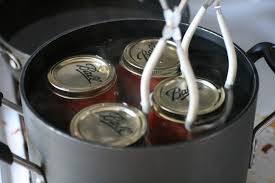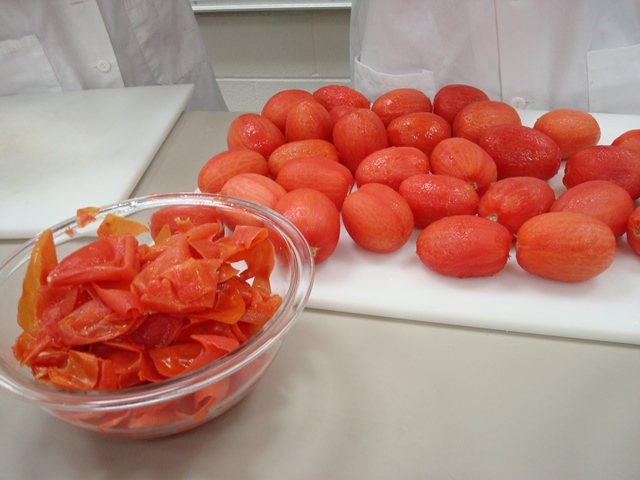In 1980’s the USDA changed their recommendations for home canning. The new guidelines stated that whole or crushed canned tomatoes, as well as canned tomato juice, sauces and salsas must be canned using a pressure cooker due to the risks of botulism associated with water bath canning.
This doesn’t mean you cannot safely process canned tomatoes using a water bath, but it is important to acidify them and to process them for a sufficient amount of time. This article will discuss the reasons for acidifying canned tomatoes and several simple ways to do so.
Why Acidify Canned Tomatoes?
The greatest risk of home canning is botulism. This potentially fatal toxin is produces by bacteria which thrive in moist, oxygen free environments. It is especially dangerous because it is impossible to detect, as it doesn’t smell or alter the appearance or taste of the contaminated food. Fortunately, the bacteria can be killed by high heat for sufficient amounts of time, and it cannot survive in acidic environments. Water bath canners do not reach high enough temperatures to completely destroy the bacteria, so only acidic foods can be safely canned in a water bath canner.
Many commonly canned fruits like berries are highly acidic. For this reason jams can be safely canned in a water bath canner. Tomatoes have an average pH of 4.6, which puts them on the borderline of safety. Also, the acidity of any given tomato can vary greatly.
Factors Affecting the Acidity of Tomatoes
There are many misconceptions out there about the acidity levels of tomatoes, for instance that heirloom tomatoes are high in acid while yellow tomatoes are lower in acid. The truth of the matter is that many things can affect the acidity levels of any kind of tomatoes, including:
- Type of Soil
- Growing Conditions
- Fungal Infections
- Time of Harvest
- Method of Harvest
- Degree of Ripeness
Due to these variables, it is important to acidify canned tomatoes.
RELATED: Recipes Using Canned Tomatoes

Image courtesy of thebittenword.typepad.com
Do I Need to Acidify Pressure Canned Tomatoes?
Pressure canners reach higher temperatures than water bath canners. They are used for canning everything from fruit to vegetables to meat safely, and reduce the amount of time you must process canned tomatoes.
Even if you are using a pressure canner, you should still acidify your canned tomatoes. In addition to fighting botulism producing bacteria, the acid helps preserve the color, flavor and texture of the canned tomatoes.
Learn more about acidifying canned tomatoes plus find recipes with canned tomatoes.
How to Acidify Canned Tomatoes
There are three simple ways to boost the acidity of any canned tomato products.
1. Lemon Juice
Lemon juice is a natural way to acidify canned tomatoes and the flavor actually brings out the richness of the tomatoes. It is important to use bottled lemon juice because you can be certain of the acid levels. Fresh squeezed juice can vary in acidity.
2. Citric Acid
Most canned tomato brands use citric acid to boost the acidity of their canned tomatoes. This additive is popular, even with the best San Marzano canned tomatoes because it is flavorless, leaving the tomatoes’ rich taste in its natural state. A half a teaspoon of citric acid is plenty for a quart of canned tomatoes.
3. Vinegar
It takes more vinegar to acidify canned tomatoes than lemon juice because vinegar has a lower acidity, typically 5%. You’ll need four tablespoons of vinegar to properly acidify each quart of canned tomatoes. This is a good addition for canned stewed tomatoes or canned tomato sauces, but it can unpleasantly alter the flavor of canned whole tomatoes that you may choose to use in soups or curries.
Extended Reading
Check out Christy Jordan’s full course on processing canned tomatoes including the best practices for safe canning.

